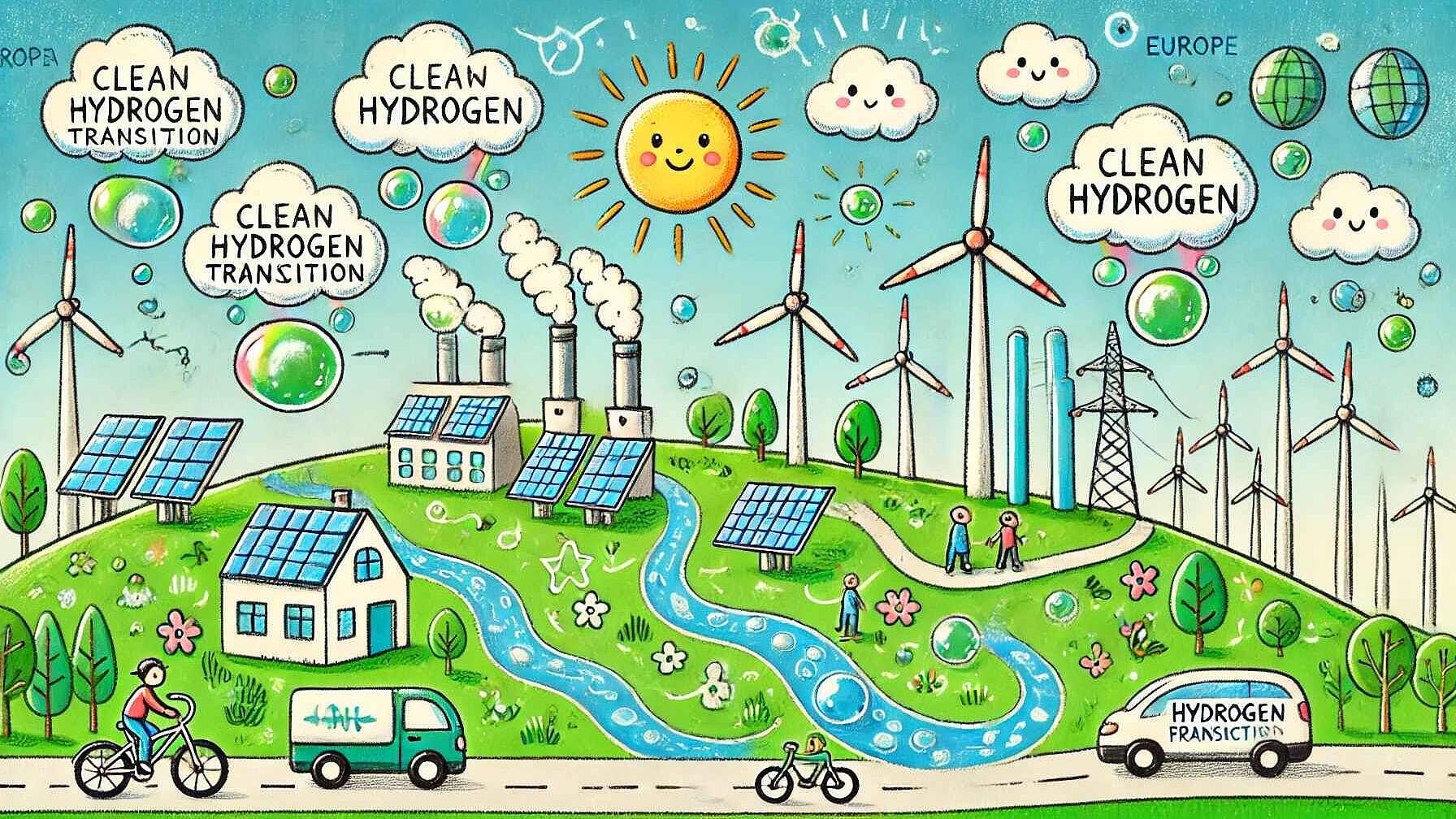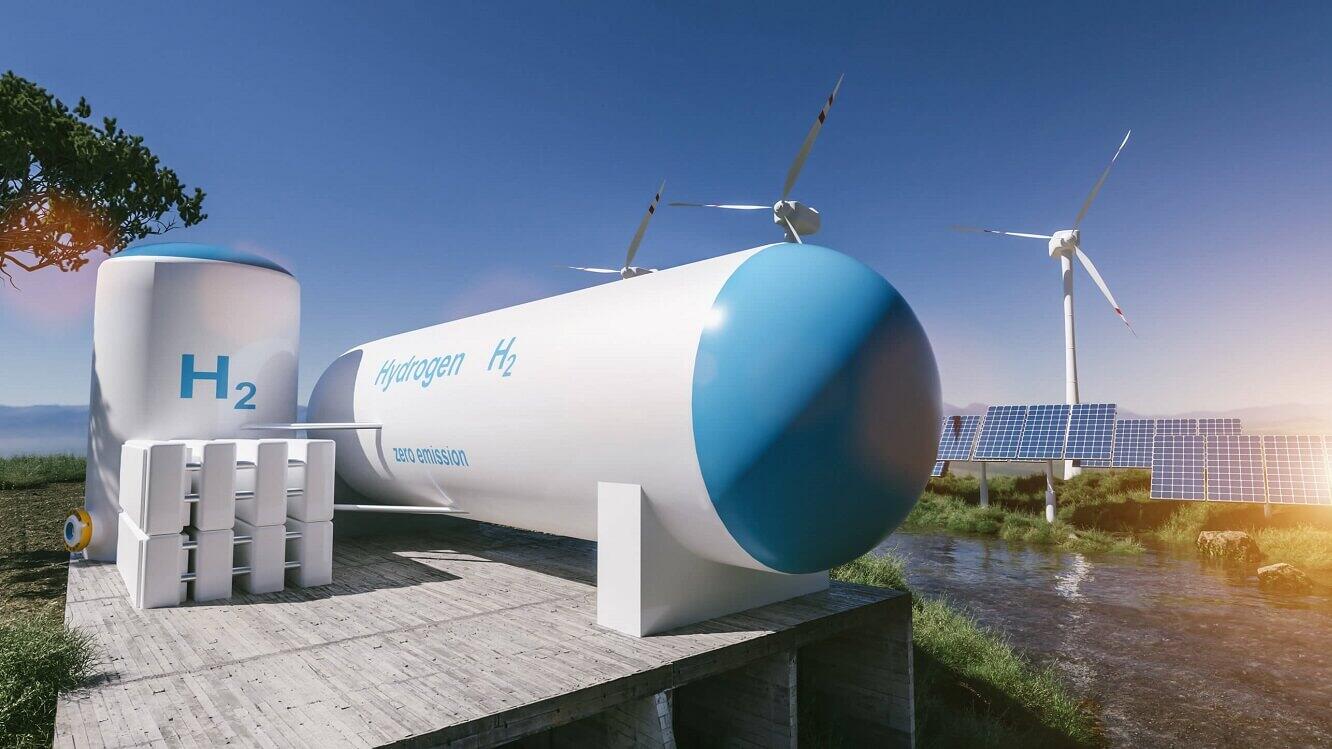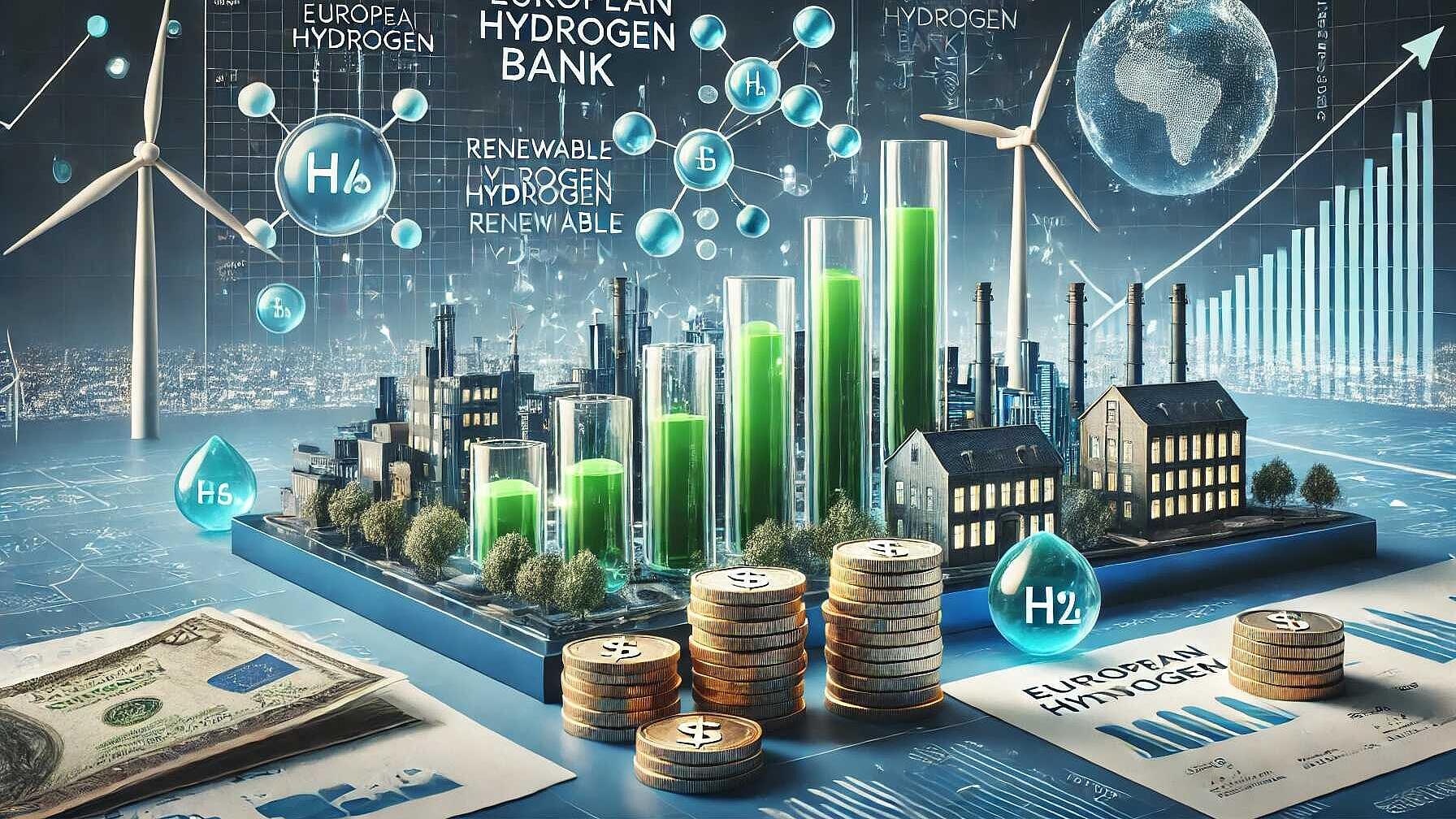 Renewable Energy
Renewable EnergyHydrogen Pathways: Leading the Charge Towards a Sustainable Future
Summary
The paper discusses Europe's strategies and technologies for producing clean hydrogen to meet its 2050 Net Zero goal, as part of the EU's Fit-for-55 package. Highlighting the requirement of producing 34-54 Mt of clean hydrogen annually by 2050, it notes the current modest electrolysis capacity of 0.05 Mt/year and underscores the need to increase production capacity to around 620 GWel. The paper considers water electrolysis as a key technology, especially when powered by renewable energy, due to its ability to integrate gas and electricity sectors and utilize surplus renewable energy.
The paper also examines alternative technologies like methane reforming with CCS which are essential in areas where renewables are limited, emphasizing the importance of high carbon capture rates. It details innovations like the STORMING project that uses renewable electricity for methane splitting to produce carbon-free hydrogen and carbon nanomaterials.
Furthermore, the paper explores additional pathways like biowaste-to-hydrogen for creating local circular economies and highlights the potential economic benefits from by-products like biochar and carbon nanomaterials. It goes on to discuss the broader impact on the job market, offering new career opportunities and reinforcing Europe's leadership in clean energy technologies. Finally, the paper encourages participation in the hydrogen economy through various avenues, including academic research, policy advocacy, and technological innovation, underscoring the importance of hydrogen in achieving the EU's decarbonization objectives.
Open full article
Hydrogen Pathways: Leading the Charge Towards a Sustainable Future
As Europe marches steadily toward its 2050 Net Zero goal, the pursuit of clean hydrogen production stands at the forefront of decarbonizing its energy landscape. Hydrogen, a versatile energy carrier, offers the potential to revolutionize how we power industries, transport, and even homes, particularly as countries grapple with the challenge of phasing out fossil fuels. The European Union’s ambition, articulated in its Fit-for-55 package, prioritizes a substantial scale-up in hydrogen production across several key technologies. According to Hydrogen Europe’s report, achieving Net Zero by 2050 will require producing between 34 Mt and 54 Mt of clean hydrogen annually. Currently, the landscape is dotted with various innovative pathways, each offering unique benefits and challenges. This article delves into the advancements and opportunities presented by clean hydrogen technologies, shaping a greener, more resilient energy system for the future.
The Current Landscape of Hydrogen Production
Presently, clean hydrogen production is an intricate mosaic of technologies. While water electrolysis is the most recognized pathway, responsible for splitting water into hydrogen and oxygen using electricity, Europe’s installed electrolysis capacity remains at a modest 0.05 Mt/year in 2024. However, water electrolysis, powered by renewable energy, holds enormous promise. Its ability to couple the gas and electricity sectors creates flexibility and unleashes the potential of stranded renewable energy sources. By 2050, Europe must ramp up production capacity to around 620 GWel to meet its clean hydrogen targets, a monumental leap from current figures.
Nevertheless, water electrolysis is just one part of the puzzle. To decarbonize regions where renewable energy is scarce or expensive, other technologies play a vital role. For instance, methane splitting and reforming with carbon capture and storage (CCS) provide alternatives for hydrogen production in these areas, especially by utilizing existing natural gas infrastructure. These methods offer large-scale production capacities and relatively lower costs, yet they also present the challenge of mitigating associated carbon emissions effectively.
The STORMING project, funded by the European Union, is an excellent example of the push toward innovative hydrogen technologies. The project focuses on methane splitting heated by renewable electricity to produce CO2-free hydrogen and valuable carbon nanomaterials. Such projects represent the cutting-edge solutions necessary to balance hydrogen production with environmental and economic sustainability.
Innovations Shaping the Future of Clean Hydrogen
Each clean hydrogen production pathway has its strengths and obstacles. Water electrolysis, for example, offers a unique opportunity to link renewable electricity with hard-to-electrify sectors. This process not only allows renewable energy storage in the form of hydrogen but also supports grid flexibility, crucial for handling intermittent renewable sources like solar and wind. The significant cost reductions anticipated in the coming years for electrolysis, driven by cheaper renewable energy and improved economies of scale, make this pathway a beacon of hope for the hydrogen economy.
However, other methods like reforming with carbon capture provide cost-effective solutions in the near term. Hydrogen from natural gas reforming, combined with CCS, can achieve significant emission reductions, provided that the carbon capture rate is high. Autothermal reforming (ATR) technology, used in many of these processes, integrates steam reforming and partial oxidation, enabling large-scale hydrogen production with carbon capture rates exceeding 94%. This technology is especially important in regions with abundant natural gas but fewer renewable energy resources, positioning it as a pivotal player in Europe’s hydrogen transition.
Methane splitting also emerges as a compelling option, particularly due to its by-product: solid carbon. This technology avoids direct CO2 emissions, offering a cleaner alternative to traditional methods of hydrogen production. With potential revenues from the sale of carbon products like carbon nanotubes and graphite, methane splitting technologies become economically attractive. Projects such as STORMING further enhance this pathway by using renewable electricity to generate hydrogen and carbon materials for battery applications, contributing to both energy storage and clean energy production.
Biowaste-to-hydrogen technologies also deserve attention for their role in local, circular economies. By converting agricultural and industrial waste into hydrogen, these technologies promote localized decarbonization and help manage otherwise problematic emissions from organic waste. Biochar, a by-product of biowaste gasification and pyrolysis processes, can sequester carbon while enhancing soil health, offering dual environmental benefits.
The Long-Term Impact and Career Opportunities
As hydrogen technologies advance, the long-term impact on the global energy landscape and job market becomes clear. The hydrogen economy is expected to create thousands of jobs in research, manufacturing, and infrastructure development. Young professionals and students entering the energy sector can find exciting career opportunities across various fields, including chemical engineering, renewable energy integration, and policy development.
Moreover, the shift toward hydrogen not only reduces Europe’s reliance on imported fossil fuels but also positions the continent as a leader in clean energy technologies. This transformation provides fertile ground for entrepreneurship and innovation, particularly in developing new hydrogen applications for industry and transportation. The integration of hydrogen in sectors like steelmaking and aviation—where electrification is challenging—opens avenues for sustainable industrial practices and cleaner fuel alternatives.
Future Innovators
For those inspired by the prospect of a hydrogen-powered future, there are numerous ways to get involved. Universities and research institutions across Europe are actively exploring hydrogen technologies, offering educational programs and research opportunities for the next generation of energy professionals. Organizations like Hydrogen Europe provide valuable resources for staying informed about policy developments and industry trends, while initiatives such as the STORMING project offer insights into practical, cutting-edge applications of hydrogen production.
Furthermore, the European Union continues to support hydrogen innovation through funding and regulatory frameworks, making this a particularly exciting time for startups and researchers in the field. Whether through policy advocacy, academic research, or direct participation in technological projects, the hydrogen sector presents ample opportunities for those passionate about a sustainable future.
Conclusion
The path to a clean hydrogen economy is paved with innovation, collaboration, and determination. With the European Union’s ambitious 2050 Net Zero goals driving the transition, hydrogen technologies are poised to play a crucial role in decarbonizing the energy system. From water electrolysis to methane splitting and biowaste-to-hydrogen production, each pathway contributes uniquely to the overall goal of reducing greenhouse gas emissions and fostering energy security.
Source: https://hydrogeneurope.eu/wp-content/uploads/2024/06/2024_H2E_CleanH2ProductionPathwaysReport.pdf
So



